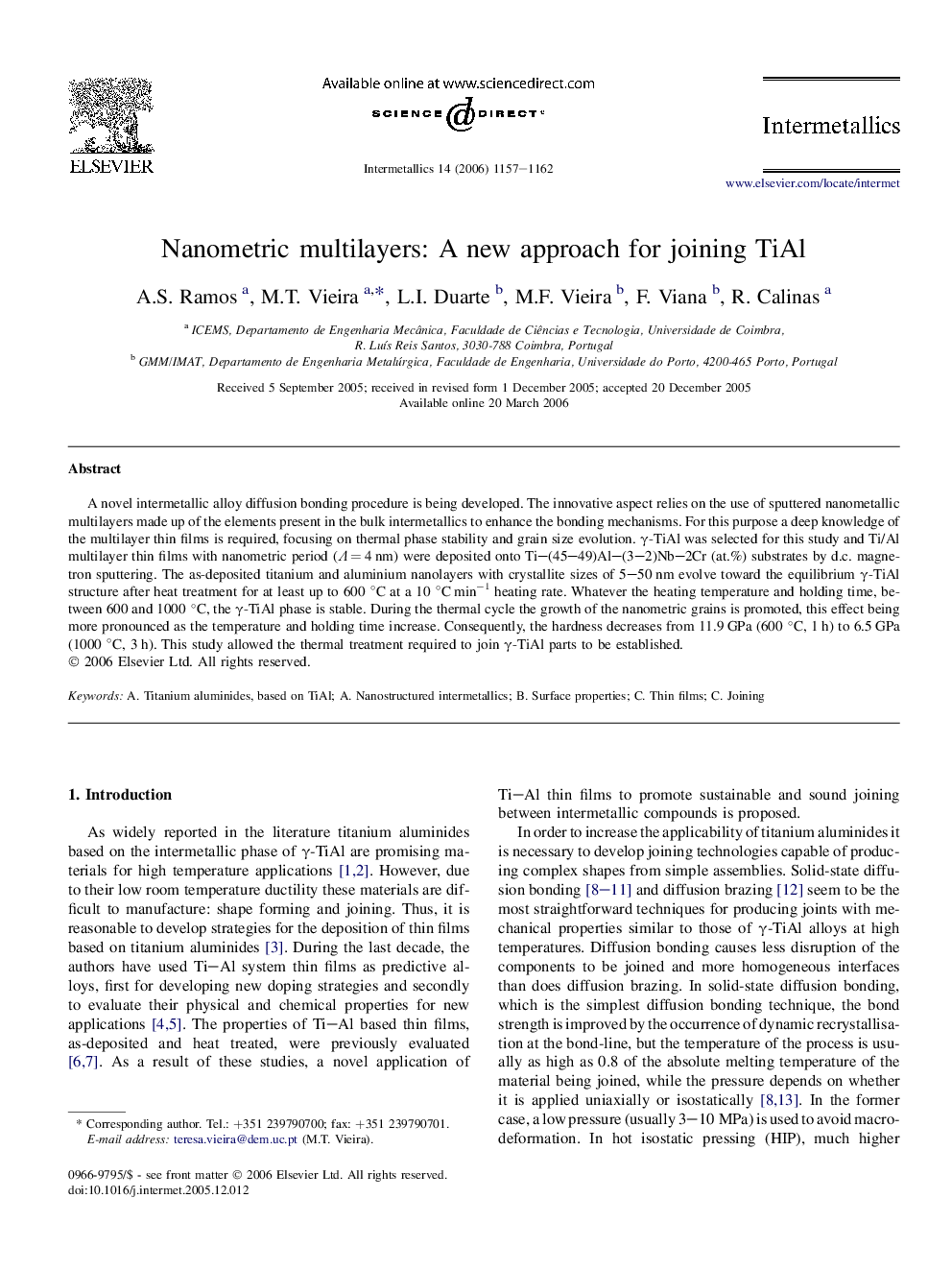| Article ID | Journal | Published Year | Pages | File Type |
|---|---|---|---|---|
| 1602064 | Intermetallics | 2006 | 6 Pages |
A novel intermetallic alloy diffusion bonding procedure is being developed. The innovative aspect relies on the use of sputtered nanometallic multilayers made up of the elements present in the bulk intermetallics to enhance the bonding mechanisms. For this purpose a deep knowledge of the multilayer thin films is required, focusing on thermal phase stability and grain size evolution. γ-TiAl was selected for this study and Ti/Al multilayer thin films with nanometric period (Λ = 4 nm) were deposited onto Ti–(45–49)Al–(3–2)Nb–2Cr (at.%) substrates by d.c. magnetron sputtering. The as-deposited titanium and aluminium nanolayers with crystallite sizes of 5–50 nm evolve toward the equilibrium γ-TiAl structure after heat treatment for at least up to 600 °C at a 10 °C min−1 heating rate. Whatever the heating temperature and holding time, between 600 and 1000 °C, the γ-TiAl phase is stable. During the thermal cycle the growth of the nanometric grains is promoted, this effect being more pronounced as the temperature and holding time increase. Consequently, the hardness decreases from 11.9 GPa (600 °C, 1 h) to 6.5 GPa (1000 °C, 3 h). This study allowed the thermal treatment required to join γ-TiAl parts to be established.
